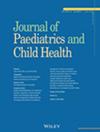Neonatal Cholestasis: Exploring Genetic Causes and Clinical Outcomes
Abstract
Introduction
Neonatal cholestasis is a group of disorders characterised by conjugated hyperbilirubinemia in the newborns and young infants. Advances in genetic testing have facilitated the identification of specific aetiology. This study examines the genetic and clinical profiles of neonates with cholestasis, focusing on genotype–phenotype correlations and diagnostic outcomes.
Methods
A retrospective review of children with neonatal cholestasis treated between 1997 and 2024 was conducted. Extrahepatic causes were excluded, and genetic testing, including a targeted cholestasis panel and whole exome sequencing (WES), was employed. Clinical and biochemical data, including gamma-glutamyl transferase (GGT) levels, were collected.
Results
Genetic disorders were identified in 28.0% of 378 cases, including mutations in ATP8B1, ABCB11, ABCB4, DCDC2, DGUOK, KIF12, USP53, and genes related to bile acid synthesis (HSD3B7, PEX1). GGT levels played a significant role in diagnosis: patients with low or normal GGT were frequently diagnosed with progressive familial intrahepatic cholestasis (PFIC)1 and 2, or bile acid synthesis defects, while high GGT levels were associated with PFIC3, alpha-1 antitrypsin deficiency, and cystic fibrosis. Consanguinity was noted in 56.0% of genetically diagnosed cases. After 2010, 35.5% of patients received a genetic diagnosis, compared to 18.2% before 2010.
Conclusion
Genetic diseases are a major cause of neonatal cholestasis, and GGT levels serve as a useful diagnostic tool in differentiating subtypes. The increasing availability of genetic testing has improved early diagnosis and personalised management. Expanded genetic testing in clinical practice is critical for timely and accurate diagnosis of these rare disorders.

 求助内容:
求助内容: 应助结果提醒方式:
应助结果提醒方式:


